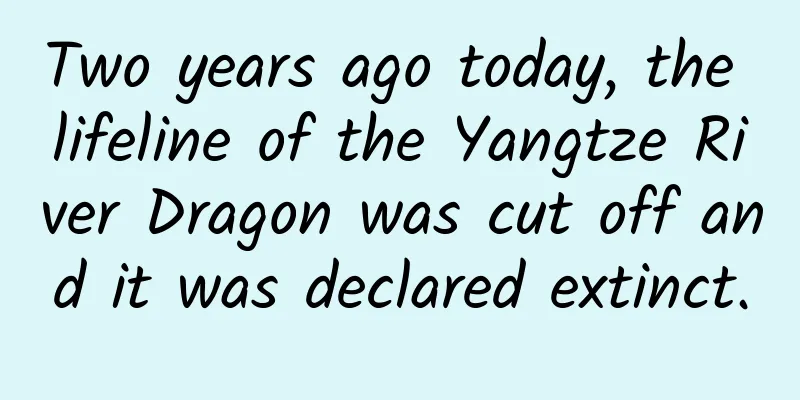China will build a near-Earth asteroid defense system to provide a "protective umbrella" for the Earth

|
Recently, my country announced that it will establish a near-Earth asteroid defense system to deal with the potential threat of near-Earth asteroids. What threats will near-Earth asteroids pose to the Earth? How to deal with them? Written by reporter Duan Ran (internship) Graphic editor: Chen Yongjie New Media Editor/Li Yunfeng Interview experts: Zhao Haibin (Chief Researcher, Purple Mountain Observatory, Chinese Academy of Sciences) Jiao Weixin (Professor, School of Earth and Space Sciences, Peking University) On April 24, Wu Yanhua, deputy director of the National Space Administration, disclosed to the outside world for the first time: my country will start to build a near-Earth asteroid defense system to deal with the threat of near-Earth asteroid impacts and contribute China's strength to protecting the earth and human safety. This new space project of my country immediately attracted widespread attention from academia and space enthusiasts. So what threats will near-Earth asteroids pose to humans? How should humans respond? ◆ ◆ ◆ Near-Earth Asteroids: Dangerous Uninvited Guests At 9:15 am on February 15, 2013, residents of Chelyabinsk, a small town in western Russia, saw multiple dazzling luminous objects appear in the sky, crossing the sky at a very fast speed, accompanied by a sharp explosion. Finally, these unidentified objects hit the ground with flames, causing a huge shock wave. The glass of many buildings in the city was shattered, and a total of 1,491 people were injured by the shock wave caused by the impact. Scientists later confirmed that this incident was the "masterpiece" of a near-Earth asteroid. ▲In 2013, a meteorite with a diameter of only about 20 meters passed over Chelyabinsk In our solar system, in addition to the main planets such as Earth, Mars, and Jupiter, there are also a large number of active asteroids. They are much smaller than ordinary planets in both size and mass, but because of their complex and strange orbits and small bodies, they flow between different planetary orbits and become "dangerous elements" in the solar system. In 1994, Comet Shoemaker-Levy 9 hit Jupiter, leaving a scar on the surface of Jupiter that is larger than the Earth. If it had entered the low-Earth orbit and hit the Earth directly, the consequences would have been disastrous. So what exactly are near-Earth asteroids? What kind of near-Earth asteroids will pose a threat to the Earth? Zhao Haibin, chief researcher of near-Earth object detection and solar system celestial body research at the Purple Mountain Observatory of the Chinese Academy of Sciences, said: "There are two small body belts in the solar system, one is the main asteroid belt between Mars and Jupiter, and the other is the Kuiper belt beyond Neptune. Under the influence of the gravity or other forces of the surrounding planets, the targets in the small body belts may deviate from their original orbits, and some of them will come near our Earth. We usually call these asteroids near-Earth asteroids." ▲Kuiper Belt (Image source: NASA) Near-Earth asteroids are defined as asteroids that can enter the range of 1.3 astronomical units from the sun (1 astronomical unit was initially defined as the average distance between the earth and the sun, and later fixed by the academic community as about 150 million kilometers for the convenience of calculation, referred to as AU). According to their orbits, near-Earth asteroids can be roughly divided into four categories, namely Amor, such as the first asteroid discovered by humans, "Eros", which belongs to this type, as well as Apollo, Aten and Atira (also known as "inner-earth" asteroids). "Among them, we should pay special attention to Apollo and Aten. The orbits of these two types intersect with the orbit of the earth. If both run to the intersection at the same time, there is a possibility of collision." Zhao Haibin told reporters. Of course, not all near-Earth asteroids are capable of posing a threat to the Earth. Zhao Haibin explained to reporters that there is a subset of near-Earth asteroids, namely "potentially threatening asteroids" (PHAs for short). Simply put, asteroids with a diameter greater than 140 meters and a distance from the Earth's orbit less than 7.5 million kilometers can be classified as PHAs. Jiao Weixin, a professor at the School of Earth and Space Sciences of Peking University, pointed out: "This type of asteroid needs to be more than 140 meters in diameter to cause regional disasters after hitting the earth, rather than just leaving a few craters." The probability of a planetary impact causing major ecological disasters is very low, but once it happens, the consequences will be too heavy for the entire earth's ecology and even human civilization to bear. Asteroids with a diameter of less than 140 meters will also cause certain secondary disasters when they hit the earth, and the probability of asteroids of this size hitting the earth is relatively high. The culprit of the Chelyabinsk impact in 2013 mentioned above was a near-Earth asteroid with a diameter of less than 15 meters. Although it did not have a significant impact on the earth's surface environment, it also caused a certain degree of loss of life and property in the local area. There have been more than a dozen impact events of similar magnitude since the beginning of the 21st century. If such a collision occurs in a densely populated area, the potential damage caused will be immeasurable. In addition, those tiny particles or debris in space, although they only form a beautiful burning track in the atmosphere, are also potentially fatal to man-made spacecraft in near-Earth orbit. Therefore, in the face of these uninvited guests that may break in at any time, it is particularly necessary to establish a complete near-Earth asteroid warning and defense system. ◆ ◆ ◆ Observation and surveillance: From the ground to space In the face of the threat that near-Earth asteroids may pose to the Earth, humans must have effective defense measures, and a major premise of these measures is to discover and determine the characteristics, orbits and possible impact times of these uninvited guests through observation, so as to provide a basis for continuous monitoring and cataloging. At present, human exploration and monitoring of asteroids are mainly carried out by large ground-based optical telescopes. In this field, the United States, which has the world's top ground detection equipment, is undoubtedly the leader. As early as 1998, the National Aeronautics and Space Administration (NASA) established the Near-Earth Object Program Office and has been responsible for a number of ground-based observation projects of near-Earth asteroids, including the Catalina Sky Survey System (CSS) at the University of Arizona, which has three optical telescopes with apertures ranging from 0.5 to 1.5 meters. So far, as many as 13,384 near-Earth asteroids have been discovered, ranking first in the world. The Lincoln Near-Earth Asteroid Research Group (LINEAR) in New Mexico has three optical telescopes with apertures ranging from 0.5 to 1 meter. The Panoramic Survey Telescope and Rapid Response System (also known as the Pan-STARRS Project) in Hawaii currently has two 1.8-meter-diameter large-field telescopes, and the Asteroid Terminal Alert System (ATLAS), also located in Hawaii, has two 0.5-meter-diameter optical telescopes. In addition, NASA's Jet Propulsion Laboratory has also joined the near-Earth asteroid detection and warning operations, and has successively launched projects such as the Near-Earth Asteroid Tracking (NEAT) and the Sentinel System, which specifically search for near-Earth asteroids and catalog and conduct risk assessments on "dangerous elements" that may pose a threat. ▲The Mount Lemmon Observatory-1 in the United States, which is part of the Catalina Sky Survey (Photo credit: Lunar and Planetary Laboratory, University of Arizona) Of course, relying solely on ground-based observations is far from enough. The Earth's atmosphere and ground background often cause serious interference to ground detection. For example, the asteroid that caused the Chelyabinsk impact was not detected because it was approaching the Earth from the direction of the sun and was in the blind spot of ground-based observatories. It can be seen that it is necessary for humans to get rid of the shackles of the ground environment and directly deploy their own ears and eyes in space. The United States is still the leader in building space-based observation and early warning systems. As early as 2009, it launched a "Space-based Wide-field Infrared Survey Explorer Satellite" (NEOWISE). Facts have proved that the depth and breadth of observations using space-based equipment far exceed ground-based sky surveys. In the first two years of the mission, NEOWISE discovered hundreds of near-Earth asteroids. ▲Mount Lemmon Observatory-1, USA (Photo credit: Lunar and Planetary Laboratory, University of Arizona) Zhao Haibin introduced: "For near-Earth asteroids, more than 98% of them were discovered by the United States, because the United States has more complete facilities and more telescopes, and they have made a relatively large contribution." But he also pointed out that other countries are also following up on related work. Especially in terms of space-based observations, the achievements made by other countries are also remarkable. For example, Canada launched the "Near-Earth Object Surveillance Microsatellite" (NEWOSSat) in 2013, which is specifically used to monitor near-Earth asteroids and space debris. Japan went a step further and launched the "Hayabusa" probe in 2003, which landed directly on a near-Earth asteroid named "Itokawa" and sent the samples back to Earth - such a detailed investigation of a near-Earth asteroid is the first time in human history. ▲Japan's Hayabusa probe (Image source: NASA) Although all countries have made remarkable achievements, to this day, human beings' understanding of near-Earth asteroids is still greatly limited. Jiao Weixin said: "Although human technology has developed rapidly, there are still a considerable number of near-Earth asteroids that have not been discovered. According to theoretical inferences, humans have only discovered 20%-30% of the total number of near-Earth asteroids with a diameter of about 100 meters, and humans have only discovered less than half of those larger than 100 meters." ◆ ◆ ◆ Deep Space Defense: Protecting the Earth At present, facing the possible impact of near-Earth asteroids, humans can only take passive defense measures, that is, relying on the construction of ground civil defense projects to minimize the harm caused by asteroid impacts. However, such a method obviously cannot completely prevent the occurrence of secondary disasters. If we influence the movement of asteroids before the impact, so as to prevent the Earth from being hit, wouldn’t it be a better choice? ▲ Schematic diagram of the DART project's mission to impact a double asteroid (drawing/Lancheng) Implementing active defense against near-Earth asteroids in space has become a major issue. The currently planned and envisioned solutions can be divided into three categories: one is to use kinetic impact to change the orbit of an asteroid. This simple and crude method was the first to be proposed and is the only one that has been put into practice so far: the only ones that have actually been implemented are the United States' "Deep Space Impact Program" and the "Double Asteroid Redirection Test" (DART) program. The former successfully impacted the nucleus of a comet in 2005, and the latter will arrive at a binary asteroid system in September this year and conduct an impact experiment on the smaller one. The other two are the "Use long-term forces to change the orbit of an asteroid" plan (such as using a space tug or gravity tug to change its orbit) and the "nuclear explosion" plan, but both of these are beyond the current level of human aerospace technology. Zhao Haibin introduced: "Except for the kinetic impact plan, there is no substantial mission planning for other plans." ◆ ◆ ◆ Asteroid protection: China is taking action As early as the 1950s, the Purple Mountain Observatory of the Chinese Academy of Sciences began to observe near-Earth asteroids, creating a precedent for the study of near-Earth asteroids in China. In 1995, the Chinese Academy of Sciences funded a detection project called the "National Astronomical Observatory Schmidt CCD Asteroid Survey Program" (abbreviated as the SCAP program), which used a Schmidt telescope as the main detection equipment. In the five years since the project was launched, the SCAP project has discovered a comet and 2,460 asteroids, and conducted in-depth observations of more than 43,000 known asteroids, including five near-Earth asteroids, and confirmed two of them as potentially threatening asteroids. Since the beginning of the 21st century, the Near-Earth Object Telescope of the Purple Mountain Observatory of the Chinese Academy of Sciences has begun operation. This near-Earth object detection equipment dedicated to my country has discovered 30 new near-Earth asteroids, making great contributions to my country's international listing. ▲The observation dome of the Near-Earth Object Telescope of Purple Mountain Observatory (Photo courtesy of Purple Mountain Observatory) But overall, there is still a big gap between my country and the international advanced level in the field of near-Earth asteroid exploration. Zhao Haibin told reporters: "my country has only discovered more than 30 near-Earth asteroids so far, while the total number of near-Earth asteroids discovered worldwide is about 28,000. Judging from the number of discoveries, my country's share is not high." ▲Purple Mountain Observatory Near-Earth Object Telescope (Photo courtesy of Purple Mountain Observatory) However, as my country's aerospace technology has made continuous breakthroughs in recent years, our aerospace personnel will surely make greater contributions in the field of near-Earth asteroid exploration and defense. The near-Earth asteroid monitoring, early warning and defense systems planned to be established in the future will truly refresh my country's achievements in this field. Of course, the practical significance of this project transcends national boundaries. Zhao Haibin believes that defending against near-Earth asteroids from hitting the earth is itself an issue that needs to be considered from the perspective of a community with a shared future for mankind. When talking about this ambitious plan, he told reporters: "If it is a relatively large impact, it will cause global or regional disasters. As a country with rapidly advancing aerospace scientific research capabilities, China is also a responsible major country. It needs to have such capabilities to defend our common home." Produced by: Science Central Kitchen Produced by: Beijing Science and Technology News | Beijing Science and Technology Media Welcome to share to your circle of friends Reproduction without authorization is prohibited |
>>: The Analects of Confucius tells us: Square dancing is the code for traffic!
Recommend
Keep warm and keep warm? Be careful! This "cycling magic tool" has many hidden dangers, and many people are using it →
As the weather gets colder, many citizens who rid...
Carrying the weight forward: the magical function of exoskeleton equipment
A normal adult has 206 bones in his body, and our...
I wanted to see clouds in the lab, but ended up changing history? That's physics!
When you look up at the clouds, do you know that ...
Analysis of Tik Tok short video products!
This article mainly analyzes the product developm...
Xinzheng SEO Training: What should you pay attention to when changing your website domain name?
For search engines, it is not recommended to chan...
Short video operation data analysis method!
In the previous sharing, we focused on the produc...
The evolution of smartphones: What will smartphones look like in the next year?
On December 10, Samsung and Huawei Honor both lau...
How to do soft promotion for APP operation?
Have you noticed that there is a new business rec...
Key APIs and techniques for adjusting Android brightness to achieve personalized APP brightness settings
Android system brightness adjustment Android syst...
Hong Kong Film "Flag Soldiers" Series 4 (1984-1990) Collection with Chinese and Cantonese subtitles
"The Flag" is a film about the life of ...
Trumpchi and Huawei's joint innovation plan is upgraded again: Soul resonance opens a new era of intelligent electric
September 24, Songshan Lake, Dongguan. GAC Trumpc...
How to quickly become a Tik Tok content operator
Friends who use Tik Tok know that video content i...
How much does it cost to join a photography mini program in Tangshan?
How much does it cost to join a photography mini ...









